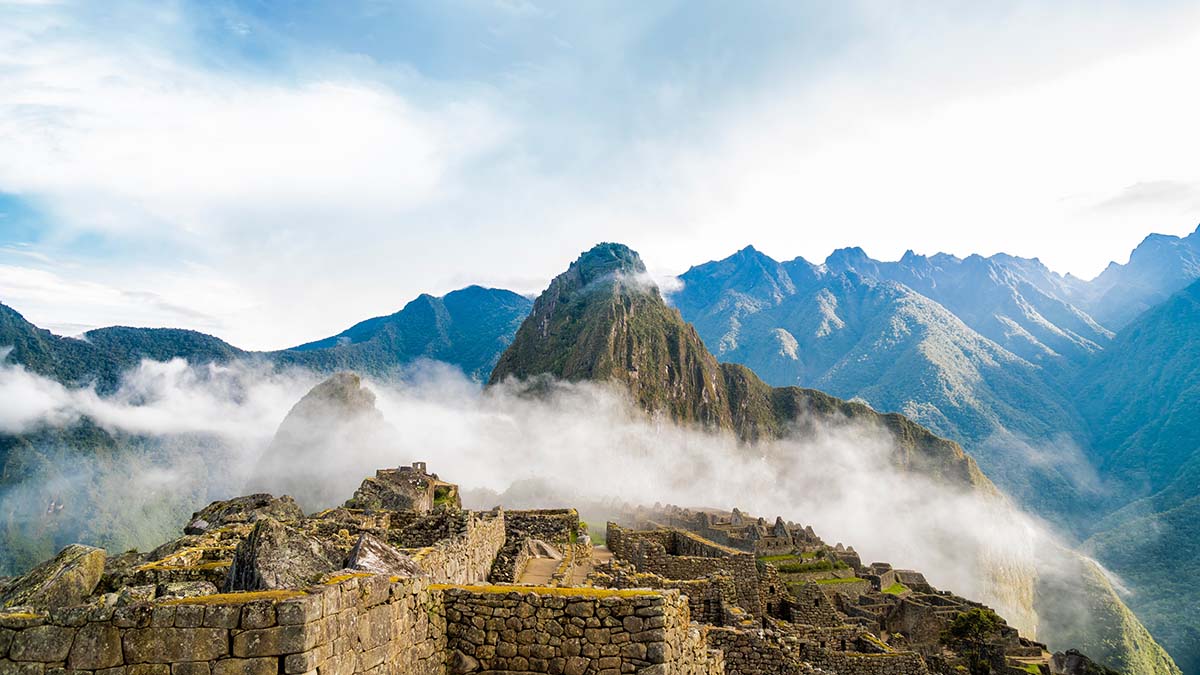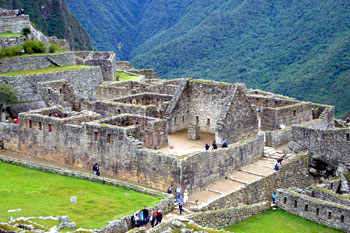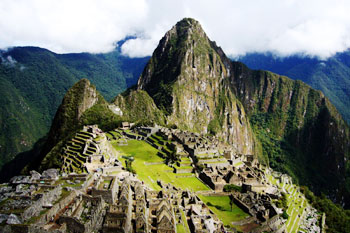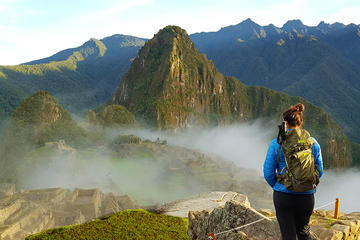
“Lost City of the Incas”
by Theodore Scott
As I climb the twisted stone staircase up the mountain, it gives me the view of Machu Picchu that I had seen in countless postcards. This spot is the best-known archaeological site on the entire South American continent. The viewpoint gives me a clear picture of the ruins – allowing me to understand their layout. But soon, the maze of staircases and structures would confuse me.
Referred to as “The Lost City of the Incas,” Machu Picchu is a ruined stone city perched in the mountains of Peru. Despite its beauty, it was abandoned for centuries. While known earlier by a few wanderers and locals, it was not revealed to the rest of the world until Hiram Bingham, while looking for a different lost city, came upon it in 1911. National Geographic brought it further into the spotlight in 1913 by dedicating an entire issue to the site.
 Coming down into the bulk of the ruins, I walk along the extensive agriculture terraces that flow down the mountainside. They don’t seem to end – eventually the vegetation just thickens and pulls the terraces from my sight. The terrace system has interesting benefits that I, being more familiar with farming on plains, would not have predicted. The terraces vary in temperature as they climb the mountainside. This allowed the farmers to plant various types of crops in their ideal conditions. Also, rain directed nutrients from the higher crops to improve the soil below.
Coming down into the bulk of the ruins, I walk along the extensive agriculture terraces that flow down the mountainside. They don’t seem to end – eventually the vegetation just thickens and pulls the terraces from my sight. The terrace system has interesting benefits that I, being more familiar with farming on plains, would not have predicted. The terraces vary in temperature as they climb the mountainside. This allowed the farmers to plant various types of crops in their ideal conditions. Also, rain directed nutrients from the higher crops to improve the soil below.
The central plaza of Machu Picchu is an open grass area that separates the residential and the ceremonial parts of the city. Llamas stroll the plaza, graze on the grass, and lie in the sun. Occasionally, one of them navigates a staircase and wanders out onto the terraces.
 I enter the ceremonial area, and come upon the Temple of the Sun, a semi-circular temple made with well-worked stones. The stones interlock and hold together without using mortar. This is a common trait of Inca architecture that makes it earthquake-resistant. Inside the structure is a large altar and a trapezoidal window that is thought to have been used for astronomical observation. Below the temple is a cave called the Royal Tomb, even though no human remains have ever been found there.
I enter the ceremonial area, and come upon the Temple of the Sun, a semi-circular temple made with well-worked stones. The stones interlock and hold together without using mortar. This is a common trait of Inca architecture that makes it earthquake-resistant. Inside the structure is a large altar and a trapezoidal window that is thought to have been used for astronomical observation. Below the temple is a cave called the Royal Tomb, even though no human remains have ever been found there.
 I continue up a staircase past a series of ceremonial baths to a quarry. The scattered boulders seem to emphasize the incomplete nature of Machu Picchu. Despite the extensive work the Incas put into this series of mountaintop structures, they never completed the city.
I continue up a staircase past a series of ceremonial baths to a quarry. The scattered boulders seem to emphasize the incomplete nature of Machu Picchu. Despite the extensive work the Incas put into this series of mountaintop structures, they never completed the city.
There are many conflicting theories about different aspects of Machu Picchu. Archaeologists cannot agree on whether the city was abandoned before or during the Spanish conquest. Its main purpose isn’t even definite. I have been told that Machu Picchu is a former Inca vacation resort, a prison, a defensive retreat, a temple, or an Inca government city.
As I explored the ruins, I notice that many facts the tour guide suggests disagree with other explanations I have read. Most modern texts say much of the information surrounding this site is guesswork, but the tour guides tend to treat some theories as fact and ignore all the other explanations. If you want deeper knowledge, you must find some good books and do your homework.
 Crossing the central plaza leads me into the residential area of the ruins. It is easy to tell that the stonework is of lower quality than what I saw in the ceremonial area. The structures are simple and domestic, making it easy to imagine people using these stone buildings as houses.
Crossing the central plaza leads me into the residential area of the ruins. It is easy to tell that the stonework is of lower quality than what I saw in the ceremonial area. The structures are simple and domestic, making it easy to imagine people using these stone buildings as houses.
Next, I head in the direction the Temple of the Condor. In the Inca religion, the condor is the animal representative of the higher world – with the snake and puma representing the lower world and this world. After a few moments of finding the right viewing angle, I can see in the rocks a carving of a condor’s head. Behind it, large stones spread into the sky representing wings.
Machu Pichu is a large site with over one hundred staircases that can be tiring to climb. One day spent among the stones hardly seems enough – which is why I am coming back tomorrow.

Private Full-Day Classic Tour to Machu Picchu from Cusco
If You Go:
The ruins are open all day long, but are the most crowded from 10:00 AM to 2:00 PM. Most people visit on day trips from Cuzco. If you want to see the ruins with less of a crowd, arrange to arrive early in the morning or in the late afternoon. The early buses up the mountainside can be caught by staying overnight in Aguas Calientes. Peak season is from June to August.
The historic sanctuary of Machu Picchu was recognized as a UNESCO World Heritage Site in 1983.
You can take a virtual tour of Machu Picchu online. An informative brochure is also available on the Peruvian government’s Machu Picchu website.
About the author:
Theodore Scott quit his job to travel around South America. Theodore’s website is www.theodorescott.com
Photo credits:
First Macchu Picchu photograph by Photo by Willian Justen de Vasconcellos on Unsplash
All other photos are by Theodore Scott.



Leave a Reply
You must be logged in to post a comment.